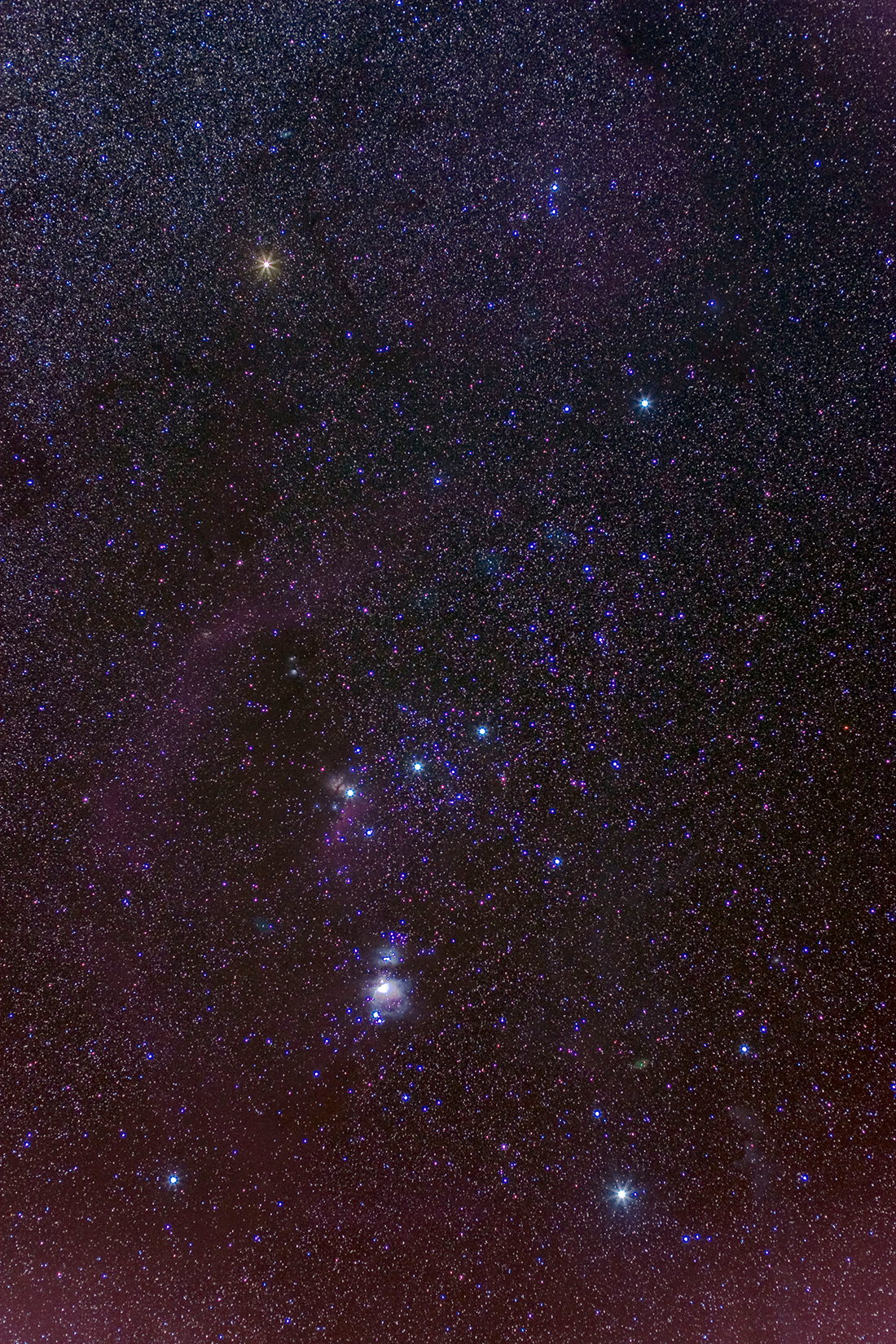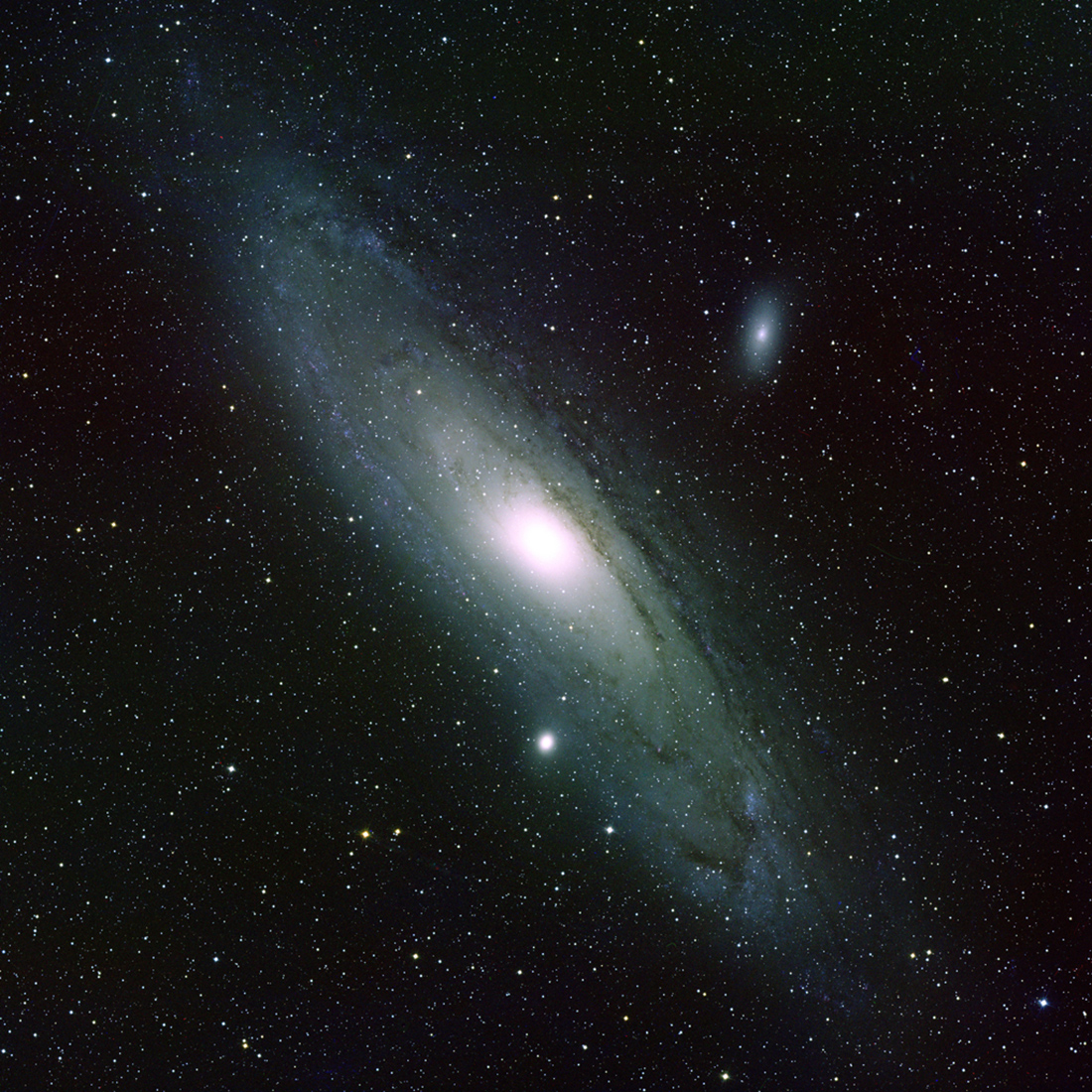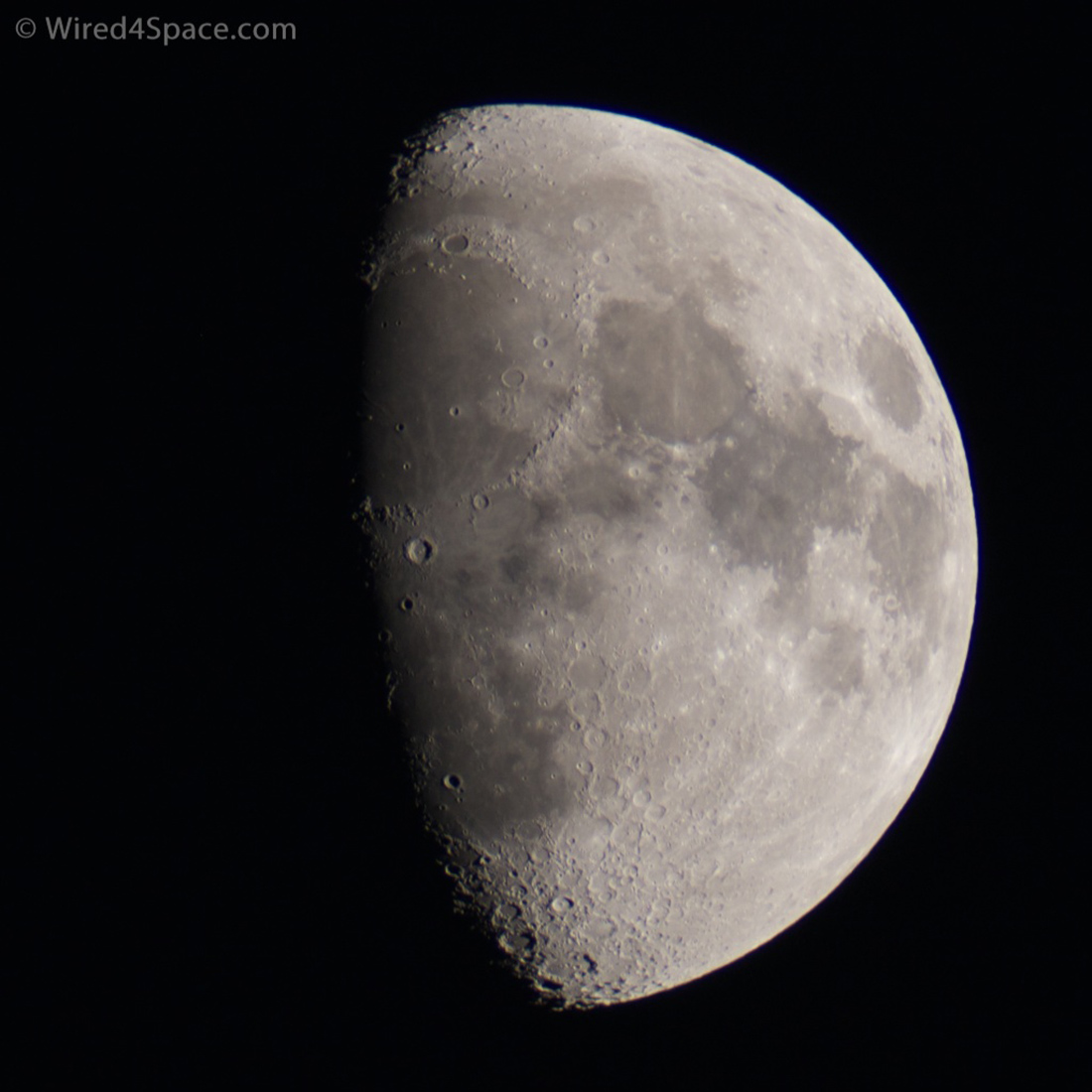It is very difficult to draw up a Top 10 list in any subject. In astronomy it is even more difficult due the the huge number of prospective candidates for the list. I have made it somewhat easier by restricting the list to things that beginners may view with relatively basic equipment.
My list is based on my own thoughts and as a result of a (sometimes heated) discussion between fellow astronomers in my local astronomy club. As you progress in the hobby your list will change dramatically as your abilities improve and you learn more about our Universe. However the following are good representative examples of the astronomical objects readily available to beginners.
10. Albireo Double Star
Albireo is the star at the head of the swan in the constellation of Cygnus. Only it is not ‘the’ star, but a pair of stars! Albireo is probably the easiest double star to view in the sky, it is certainly one of the most impressive. Seen with the naked eye it appears to be a single star, indeed with a pair binoculars you would be hard pressed to split them, but a telescope of medium power will allow you to see both stars easily. The primary star of the pair is a bright orange, whilst the secondary is an electric blue.

9. Coathanger Asterisms
The coathanger cluster, or to give it its proper name Brocchi’s cluster, is an asterism in the constellation Vulpecula. This is not readily visible without binoculars but when you spot it you will immediately understand its common name as it looks exactly like an upside-down coathanger. It consists of yellow, orange and blue stars and can be found by following a line up from the bright star Altair to Vega. Once you have found it you will have no difficulty finding it again. The Coathanger is best viewed in binoculars or a small telescope at low magnification as the asterism is quite large.

8. Jupiter and Moons
Of the planets Jupiter, the fifth planet, is the largest in our Solar System. With the naked eye Jupiter appears to be a very bright star. In fact it is the third brightest thing in the night skies after the Moon and Venus. When viewed with binoculars you will be able to see the four main moons orbiting the planet as little dots of light. Viewing through a telescope you will see the moons more clearly, and will start to make out details on the surface. The bands can be seen quite clearly and in wonderful colour. If you time your observation right you will also be able to see the Great Red Spot as the planet rotates.

7. Orion and Orion Nebula
Of all the constellations in the night skies the two that are richest in astronomical features and easyiest to pick out are Cygnus and Orion. Cygnus dominates the summer skies whilst Orion rules the winter nights. The constellation itself represents Orion the hunter, and has Betelgeuse at its head, Rigel at its foot and a triplet of stars representing Orion’s belt. Just below the belt is the sword of Orion of which the Orion Nebula, M42, is a part. The nebula will be seen to the naked eye as a fuzzy region. A pair of binoculars or small telescope will start to reveal the detail in the nebula, with the stars of the trapezium visible to a high powered optic.

6. Andromeda Galaxy
The Andromeda Galaxy is the nearest spiral galaxy to us at a distance of two and a half million light years. Andromeda is an easy object to find and can be seen quite clearly on a reasonably dark night. To the naked eye it appears as a faint fuzzy patch in the sky, but in binoculars and telescopes the true structure and beauty of the galaxy becomes evident. If you have a big aperture telescope or imagery equipment you will be able to see even more detail in the spiral arms.

5. Perseid Meteor Shower
The Perseids are a meteor shower that starts mid July and lasts through to the third week of August with the zenith occurring around the 12th August. This is the time of the year to be out at a dark location when you can watch the cosmic fireworks in the heavens. There are a number of meteor showers throughout the year, but the Perseids puts on by far the best show. They are named the Perseids as they all seem to originate from the constellation of Persius.

4. The Milky Way
Our own galaxy, The Milky Way, has to be a contender for the top 10. It is probably something you have seen on a dark night without realising it, indeed the Milky Way can look like clouds drifting by overhead. if you were to stop and look for a while you would realise that the clouds are moving at the same rate and in the same direction as the visible stars. Then you will come to see that what you are looking at is the light of millions of faint stars combined to give the appearance of a cloud. Using a telescope or binoculars will render some of these stars as individuals, but there will still be thousands combining to form the mysterious galactic mists.

3. The Moon
This list would not be complete without the inclusion of the Moon. Often to astronomers the Moon is a nuisance throwing light over the night skies and preventing us looking at deep space objects. However the Moon itself is a fascinating object to study, it is easy to see in the night sky, and often during the day as well. You can view it’s detail with binoculars and telescopes to magnify the features of it’s surface. One of the best advantages of the Moon is that it is readily visible even in the environs of a light polluted city.

2. The Pleiades
The Pleiades is an open star cluster located in the constellation of Taurus the bull. It is also known as the Seven Sisters, and also Messier 45. There are over 1,000 stars in this cluster which is characterised by a number of bright blue stars. The Pleiades is a naked eye object and will be seen as a fuzzy patch from which a few individual stars can be seen, my best view on a dark night revealed 4 stars, but others with me saw 6. Photographically the cluster displays blue nebulosity around the stars drifting off into space. With a low power telescope the beauty of the cluster is observed, with the stars shining like electric blue christmas lights. The Pleiades are easy to spot as they resemble a question mark “?”.

1. Saturn
Saturn has to be at the top of everyones list purely for the WOW factor of actually seeing it with your own eyes. Saturn is the second largest planet in our Solar System, about 9 times the size of Earth, and is a gas giant. The striking feature of the planet is the system of rings that surround it. Although Saturn can be seen with the naked eye it is best viewed using a telescope. Even a small telescope you will be able to pick out the rings and with a larger telescope you will be able to see the divisions between the rings.




